




Welcome to Sydney Fish Market’s winter review.
This seasonal guide is designed to keep you up to date on all the latest seafood tips, tricks, recipes, and trends. We reckon we’re the right people to keep you informed, we are Australia’s Home of Seafood after all.
We hope this inspires you to get more seafood on your plate in the colder months.


The winter months can prove a nutritional challenge for many, with vitamin deficiencies becoming more common as the weather cools. By increasing your seafood intake in winter, you can help boost your immune system and better your chances in fighting winter illness.
Omega-3 fatty acids are especially important, as they are an essential fat, but cannot be produced by the body, so they must be derived from the foods we eat. The Heart Foundation recommends consuming 2–3 serves of fish (including oily fish) per week as part of a healthy diet. This provides around 250–500 milligrams (mg) of marine-sourced omega-3s per day.
Today we’ve gathered five omega-3 rich seafood species for you to add to your weekly meal rotation, to ensure you’re meeting the recommended intake of these necessary fatty acids.
Blue MackerelAccording to the Australian Health Survey, less than 1% of adults report eating Sardines, even though they are considered one of the most nutritious species of seafood.
These little guys are wild caught across the entire southern half of Australia. One of the richest sources of omega-3 oils on the planet, this species is loved worldwide. Forming large schools in the ocean, Sardines are caught by a range of methods that target them specifically. Not only does this eliminate bycatch, but also helps to keep this species low-priced.
Usually sold either whole or as fillets, when cooking this fish make sure to work with its rich oiliness. Flavours such as lemon, garlic, and punchy herbs are ideal.
One of the most widely distributed families of fish on Earth, Mackerel are deeply embedded in world cuisine. The name Mackerel derives from the old French ‘macquerel’, which most closely translates as ‘pimp’ or ‘procurer’ which apparently refers to the practice of large shoals of Mackerel enthusiastically spawning close to shore and the fact that in medieval times people had some bizarre theories about animal procreation.
But whatever the name, Mackerel share some fantastic attributes. Known for their uncommonly high levels of omega-3, their rich oil opens up so many avenues to explore. Don’t be shy to char the skin, whether in the oven or on the BBQ, and embrace strong, fresh flavours like lemon and garlic. A classic street food dish across the Mediterranean is grilled Mackerel fillet with spices, diced tomato, olives, red onion, and lashings of fresh herbs, served in a fresh bread roll. Hungry?!
Now here’s one for the true seafood lovers. Your favourite fish’s favourite fish, Mullet have been loved by those in the know for tens of thousands of years in Australia, everywhere on the east coast. This hardy fish is as at home in the freshwater upper reaches of estuaries as it is in the ocean, and will take on a corresponding estuarine or marine flavour. As a rule of thumb, the further up an estuary a mullet is caught, the stronger the flavour, with sea run Mullet having a more neutral, briny flavour.
However, all Mullet share an uncommonly high level of omega-3 in their generously distributed fat, and it is flavour in this fat that is the secret to their appeal. To get the most out of this fish, work with the fat. Use methods that are likely to char the skin - barbecuing, roasting or placing skin-side up under the grill for a few minutes. Let the fat render down, dressing the flesh as it goes. Use punchy flavours to compete with the fish whether that’s a spicy Middle-Eastern seasoning, a Mediterranean combination of lemon, herbs and garlic or a Chinese chilli and ginger pairing.
Due to Mullet’s wide distribution as well as their schooling nature, Mullet are easy for our fishers to target, and cheap to buy. At the peak of the autumn Mullet run on the NSW coast, the price can get as low as $2/kg, though usually retailing for closer to $5 to $8 per kilo for whole fish.
Considered the tropical counterpart to the more famous Silver Trevally, the Longnose Trevally is typified by uncommonly broad, evenly deep fillets. The flesh is translucent when raw and bright white when cooked, and contains high levels of omega-3, which makes for a juicy, nutritious flesh that likes to hold its shape when cooking, particularly in liquid. These traits make this fish perfect for using in rich soup and aromatic curries or stir-fried in chilli sauce.
Australia may be girt by sea, but as we know all too well, is not blessed with an abundance of fresh water. As a result, our seafood palate tends towards saltwater species. However, we also have some fantastic native freshwater species and at the top of that list sits the Barcoo Grunter.
Also known as the Jade Perch, this star of the north has such fine eating qualities that farming has begun in earnest. They feed on anything they can including fish, crustaceans and insects. This wide diet allows them to quickly build up deposits of fat when there’s an abundance of food available and to tap into that fat when times are leaner.
When plump, Barcoo Grunter have one of the highest levels of omega-3 found in any fish. The flavour of the meat is clean and rich, lending itself to grilling or panfrying, rendering some of the fat and using some acidity to cut through the richness.





Scan to watch a video about Troy
For over two decades, Troy Billin has been a driving force in the world of professional fishing, supplying a diverse array of high-quality seafood to Sydney Fish Market from his local waterways of the Clarence River. His commitment to sustainability and excellence has earned him recognition as a Master Fisher by OceanWatch, and as the winner of the 2024 Seafood Excellence Awards in the prestigious Primary Producer (NSW) category.
In celebration of International Day of the Fisherman (June 29), we’re shining the spotlight on Troy and his career, to give you a window into the life of one of the state’s most successful and well-respected fishers.
Troy Billin's path to professional fishing began in Yamba, along the Clarence River. His early fascination with recreational fishing ignited a lifelong dream of becoming a professional. Against the odds, Troy turned this dream into reality, starting with a modest 14-anda-half-foot tinny and unyielding determination.
Troy's journey was far from smooth sailing. He purchased his first fishing business with minimal funds, acquiring no boats or gear. Despite these initial challenges, he made a mark in the industry by targeting species like Snapper and Flathead off Byron Bay. His perseverance paid off as he secured key partnerships with local seafood outlets, including Bay Seafoods in Byron Bay, which played a pivotal role in his early success.
Troy’s commitment to delivering top-quality seafood led him to become a key supplier to Sydney Fish Market. Here, his prized catches find their way to the plates of seafood enthusiasts and esteemed chefs across New South Wales and beyond. But it doesn't end at the market; Troy's innovative spirit shines through his utilisation of SFMblue, Sydney Fish Market’s digital trading platform, which connects him with wholesale buyers not only in New South Wales but also in Victoria, South Australia, and Queensland.
Troy's fishing expertise extends to a diverse range of species, each with a different seasonal availability. From the highly-prized NSW Mud Crabs and Sprat – which he's famous for – to Bonito, Mackerel, Snapper, Flathead, Whiting, Bream, Sea Mullet, and Kingfish, his catch reflects the rich variety of marine life off Yamba's shores, and his commitment to ensuring sustainability by fishing alongside seasonal population peaks.
For Troy Billin, the future holds exciting possibilities. With the establishment of his business Yamba Fisheries, he's taking his entrepreneurial spirit to the next level by marketing and selling not only his own catch, but also the products of other local fishers. This venture promises to be a hub of sustainability, quality, and transparency, with a focus on providing consumers with the freshest and finest seafood.
Troy Billin's journey from a humble tinny to becoming one of the industry’s most well-respected primary producers is a testament to his passion, dedication, and a deep connection to his craft. His story is a celebration of Australian fishing, sustainable practices, and a testament to the abundance of the sea. As he continues to cast his nets into the pristine waters off Yamba's shores, Troy Billin remains an inspiration to both aspiring fishers and seafood enthusiasts alike.
Fishers’ cooperatives and Sydney Fish Market are closely linked through the seafood supply chain in New South Wales. Here’s how the relationship works.


Fishers’ cooperatives work with many individual local fishers, who harvest seafood from nearby waters. These cooperatives provide services to their members that include the aggregation, initial processing, and sometimes local sale of the seafood caught by their fisher members.

At Sydney Fish Market, most of the seafood is sold through a Dutch auction system, which is a method where the price starts high and decreases until a buyer makes a bid. Fun fact: we are the largest fish market in the Southern Hemisphere and serve as a primary auction centre where seafood is efficiently distributed to buyers from all over Sydney and the state, from wholesale to retail.
The cooperatives often act as intermediaries to collect the catch from individual fishers and then transport it to larger markets for sale. We then operate as a central trading hub for a huge number of commercial fishers, seafood producers, and aquaculturalists (including cooperatives) to sell their catch.



This linkage also provides a system for quality control and traceability. Seafood passing through the cooperative and then through our Market can be traced back to its source, ensuring adherence to fisheries management and food safety regulations.


A cooperative’s connection to Sydney Fish Market allows local fishers to access a wider market, ensuring they receive competitive prices for their seafood which might not be achievable if they were to sell solely within their local community or through direct sales alone.

Sydney Fish Market provides a platform that helps to support the viability of local and regional fishers’ cooperatives. We offer a demand-driven environment that encourages sustainable fishing practices through various accreditation schemes and market-driven incentives.
Through this link, fishers’ cooperatives such as those in Wollongong, Ulladulla and Clarence River benefit from access to a broader consumer base and professional marketing and distribution channels, while Sydney Fish Market benefits from a steady supply of local, fresh seafood that supports the local fishing industry and economy.
The tradition of eating seafood is as old as our country itself. National NAIDOC Week celebrations are held across Australia in the first week of July each year (Sunday to Sunday), to celebrate and recognise the history, culture and achievements of Aboriginal and Torres Strait Islander peoples... making this week the perfect time to explore just some of the incredible fishing practices of our local Indigenous community.


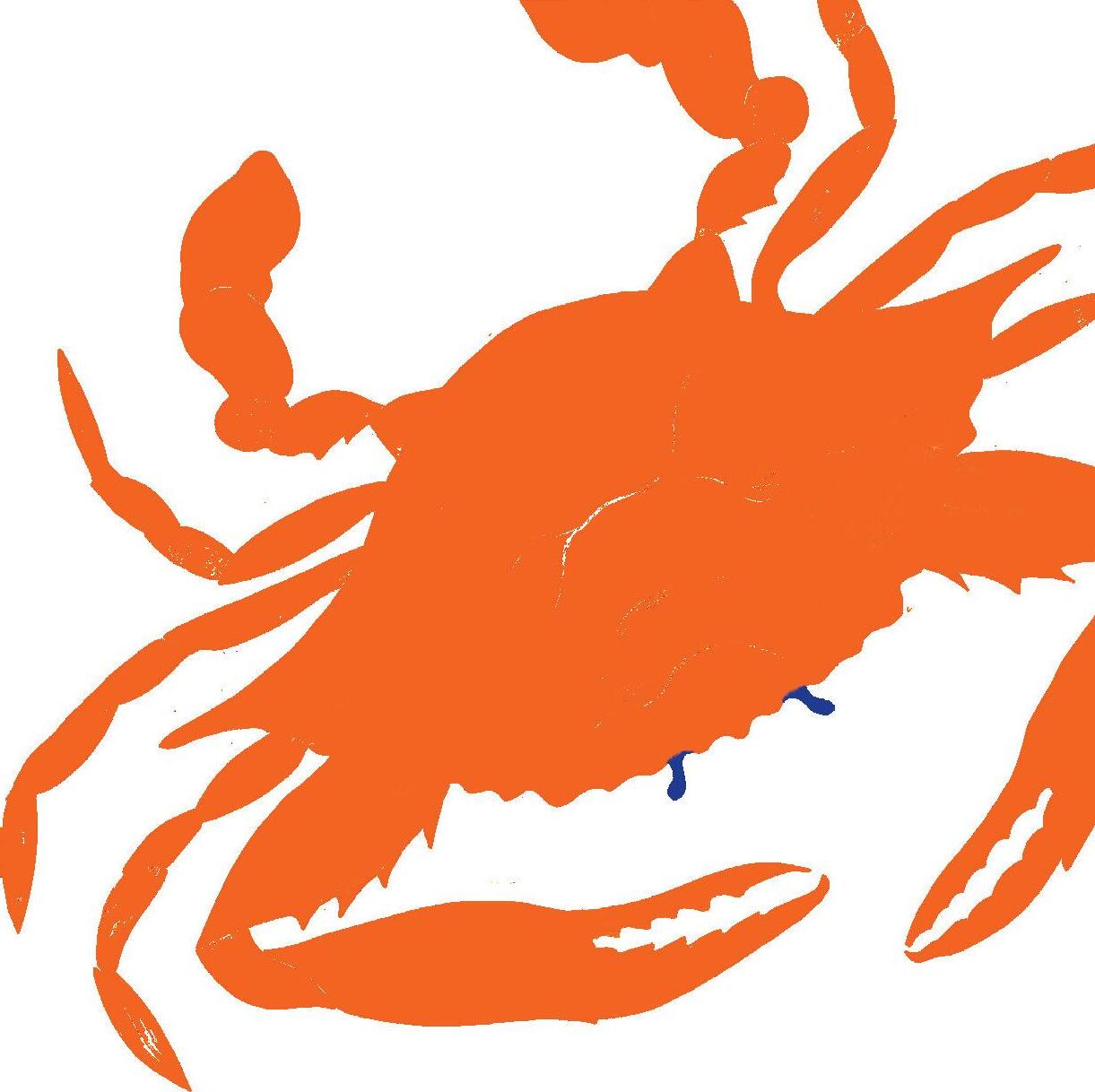
Before colonisation, Aboriginal and Torres Strait Islander peoples lived sustainably off Australian waters for thousands of years, seeing fishing as both providing sustenance, and as a cultural practice informed by ecological knowledge passed down through generations.
To this day, fishing is just one element of the deep spiritual connection many Aboriginal and Torres Strait Islander communities have with their oceans or inland waterways.
Indigenous fishing practices are incredibly varied and have been honed over millennia, underpinned by a deeply held respect and love for Australia’s land, sea, and waterways.
ABORIGINAL
Originally, Blackwattle Creek was a tidal watercourse, flowing from swampy lands that are now within the grounds of the University of Sydney through a valley thick with wattle trees and kangaroo grass, and then draining into Blackwattle swamp, at the head of Blackwattle Bay (near Glebe).
Archaeological discoveries in the area have confirmed that prior to European settlement, this creek was a source of fresh water for Sydney’s Aboriginal people, and an important place for fishing and other activities.

Aboriginal and Torres Strait Islanders’ fishing practices have always been underpinned by an intimate knowledge of seasonality, and a respect for Country. This means utlising natural signs – such as blooming flowers, wind and tidal changes, and algal blooms – to know when and where to fish.
Indigenous fishers were also careful to take only what they needed, sustainably managing fish populations by throwing back fish that were undersized, spawning or full of roe.
This knowledge and these cultural rules are handed down orally through generations.
For many years, Indigenous Australians not only foraged for a range of species, including pipis, oysters and cockles, but also developed sophisticated infrastructure such as traps, nets, and stone weirs to sustainably fish Australia’s estuary systems.
Most coastal areas of Australia have evidence of stone weirs –constructions which trapped fish in shallow lagoons using the tides. In other river systems, woven basket traps and nets were used, and still are to this day. Diving is also a traditional practice, used to collect species like abalone, particularly on the South Coast of New South Wales.
In Sydney Fish Market’s local area, the matriarchal societies of the Gadigal and Wangal people were built around fishing, with women conducting the majority of this work. Colonial journals and old stories from Aunties and Uncles describe

the garrigarrang (sea) of Warrane (Sydney Harbour) being filled with nawi (canoes) from morning till night, as women hook-and-line fished the harbour.
Women would make sharp hooks from shells, and use plants or even their hair as the line. Often the women nursed their babies and sang while they fished, dropping their garradjun (bark fishing line) into the water, a crackling fire in the belly of their nawi as both a source of light and a means to cook freshly caught fish.
Men would remain on the shore, hunting larger land animals and teaching older boys to spear species like Stingray from the rocks.
Shell middens are also found all around our local area, including throughout Redfern and Glebe, revealing the areas that Aboriginal communities would gather to eat their catch. Middens in Leichhardt, Balmain and Rozelle are dated at approximately 4,500 years old, and are recognised as significant by the Metropolitan Local Aboriginal Land Council and archaeologists.
However, applications can be made to NSW DPI for permission to fish outside this definition, and as of January 2023, over 150 community events and cultural fishing activities (including NAIDOC week celebrations, youth camps, knowledge transfer activities, funerals, seasonal harvest of culturally significant species and a range of extended family and community gatherings) have been supported across NSW.
While the Fisheries Management Act aims “to recognise the spiritual, social and customary significance to Aboriginal persons of fisheries resources and to protect, and promote the continuation of Aboriginal cultural fishing”, some Indigenous communities feel that we have a long way to go in improving their fishing rights.
For thousands of years, Aboriginal and Torres Strait Islander people have used fishing to build a livelihood for themselves, their families and their communities.
A catch of fresh fish provides a community with immediate subsistence and future trade and sale options, as well as employment.
In this way, fishing is crucial for the continued success of coastal Aboriginal and Torres Strait Islander community economies.
Aboriginal cultural fishing is defined in the Fisheries Management Act (1994) as “fishing activities and practices carried out by Aboriginal persons for the purpose of satisfying their personal, domestic or communal needs, or for educational or ceremonial purposes or other traditional purposes, and
- Australian Institute of Aboriginal and Torres Strait Islander Studies

The classic Australian way to enjoy seafood is in the height of summer, around a Christmas table, with a cold beer and a squeeze of lemon within arm’s reach. Cooked prawns peeled by hand, chilled oysters, and cold smoked salmon are the iconic trappings of an Australian’s summer seafood consumption.
In the colder months, our love for seafood can tend to fall to the wayside, and consumption drops significantly. But in reducing the amount of seafood we’re eating, we’re missing out on the many species that thrive in winter, not to mention the myriad health benefits of seafood! Taking inspiration from countries who live in colder climates almost year-round, we have found four ways to reignite your love of seafood in winter.
The cold, clean waters of the North Atlantic Ocean act as a natural fattening room for shellfish, allowing them to grow to maturity with full, rich flavours. Langoustine, usually known as Scampi in Australia, is a popular choice on the West coast of Sweden for this reason.
The Swedish way to enjoy this delicacy is fresh, on a sandwich, with a large dollop of mayonnaise. Alternatively, throw these small shellfish under the grill, garnished with rosemary, parsley, garlic, chilli flakes, and lemon, for an appetiser that will have every guest licking their fingers.
You may not expect Russia to have a thriving seafood culture, but its countless lakes and rivers mean that it certainly does! The best-known dish in the Northern Russian cookbook is a fish soup called Pomor Ukha, which combines Cod, sliced potatoes, peppercorns, chopped onion, hot milk, diced butter, and chopped herbs. As a substitute for the Cod traditionally used in this recipe, we recommend Blue Eye Trevalla, Mahi Mahi, or Barramundi, which have a similar flake and consistency.
Northern China is notorious for cold, harsh winters, and the region of Shandong along the northern coast is rich with seafood. Shandong cuisine is known as the ‘ancient mother’ of Northern Chinese cuisine, and heavily features fish alongside strong flavours (especially from the onion family) and lots of salt.
Sweet and sour fish is a classic dish from this region –golden, tender and delicious. The traditional way to cook this dish is to deep fry a whole fish, but as not everyone has the kitchen implements required for this, we recommend shallow-frying fillets dusted in a cornstarch mixture instead for a similar, but simpler, effect. Drizzle the crispy fish fillets with an aromatic, sweet and sour sauce loaded with colourful peppers.
Clam Chowder is one of the oldest and most quintessential American dishes, created in New England where the winters are long, cold, and commonly feature heavy snow. Our website features a traditional Clam Chowder recipe, with a hearty soup base. You can mix up the seafood ingredients according to your preferences and availability at the market, with Pink Ling, Salmon, Mussels and Prawns all working well instead of, or in addition to, the Clams.
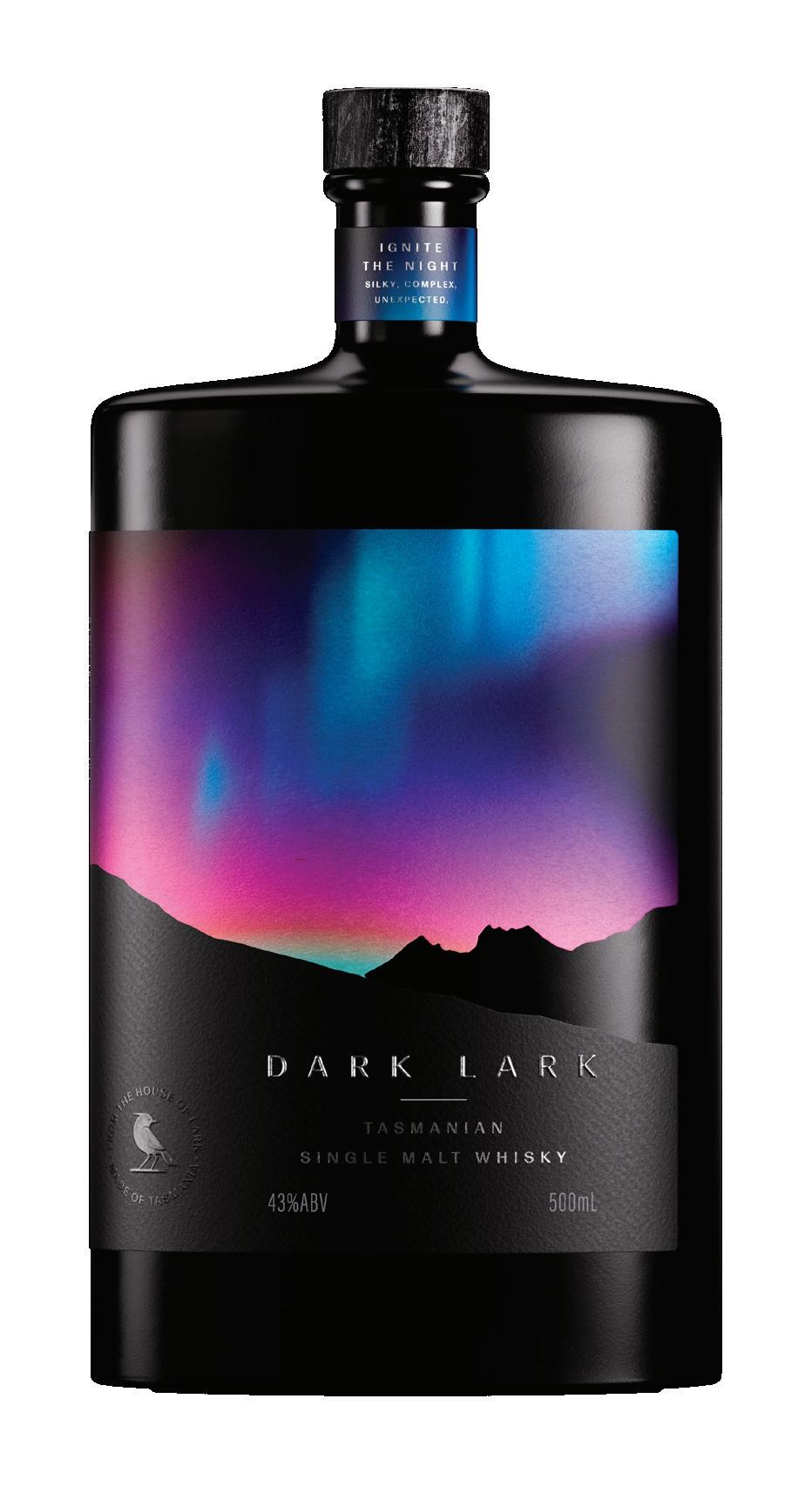


AFTER DARK, UNEXPECTEDLY SMOOTH SINGLE MALT AWAITS.



A seafood risotto is the perfect winter dish: hearty, warming, and nutritious.
SERVES 4 • PREP 15 mins • COOK 40 mins
¼ cup extra virgin olive oil
1 onion, diced
3 cloves garlic, chopped finely
1.75 litres fish stock
500g carnaroli rice
¾ cup dry white wine
1 bunch green asparagus, chopped, tips halved lengthways (see notes)
500g green Prawns, peeled, deveined and halved lengthways
1 x 250g Squid, cleaned and cut into thin strips, tentacles discarded
100g Saucer Scallops, trimmed and quartered
100g baby English spinach
50g butter
1 lemon
Salt flakes and freshly cracked black pepper, to taste
1. Heat oil in a large, high-sided frying pan over medium-high heat and fry onion and garlic for a few minutes, until soft but not coloured.
2. Meanwhile, bring stock to a simmer in a saucepan, cover and keep on lowest heat.
3. Add rice to onion and stir for a couple of minutes until grains are hot and well coated in oil. Add wine and stir until absorbed. Reduce heat to medium, add 2 ladlefuls of stock and stir until most of the liquid is absorbed. Continue stirring, adding stock a ladleful at a time for 10 minutes, stirring constantly and allowing each ladleful to be absorbed before adding the next.
4. After 10 minutes, stir in asparagus. Continue stirring in stock for 4 minutes, then add Prawns and Squid and continue stirring in stock for another 2-4 minutes, until rice is tender, with a slight bite and creamy consistency; you may not need all of the stock.
5. Stir Scallops, spinach, butter, a squeeze of lemon juice, salt and pepper through the rice, adding a little more stock if necessary to give a creamy consistency. Taste, add extra salt if needed and serve immediately on a flat plate, tapping the bottom of the plate to spread the risotto out.
NOTES • If asparagus is thick and woody, discard the woody bottom section and peel the spears with a potato peeler.
ALTERNATIVE SPECIES • Cuttlefish, Mussels, Salmon, Tuna.

Let’s get ready to deep-fry!
SERVES 6 • PREP 10 mins • COOK 10 mins
1kg medium Octopus, cleaned (see note)
2 tablespoons fish sauce
2 tablespoons lemon juice
1 teaspoon dried chilli flakes
3 teaspoons crushed coriander seeds
3 teaspoons salt flakes, crushed
2 teaspoons crushed white peppercorns
1 ¼ cup tapioca starch
Vegetable oil, for deep-frying
1 red chilli, finely sliced, to garnish Parsley or coriander leaves, to garnish
1. To tenderise Octopus, place into a bowl and cover with boiling water to blanch for 1 minute. Drain in a colander and pat dry with paper towel.
2. Cut tentacles into 3cm pieces. Honeycomb the inside of the head with shallow parallel cuts on the diagonal and
then again at 90 degrees. Cut the head into bite sized pieces.
3. Place Octopus, fish sauce and lemon juice in a bowl and marinate for 30 minutes. Drain and pat dry.
4. Place chilli, coriander seeds, salt, pepper and tapioca in a large bowl, add the Octopus and toss well to coat. Place octopus in a colander and shake well to remove excess flour.
5. Heat oil in a wok or deep-fryer to 180ºC.
6. Deep-fry Octopus, in batches, for 1-2 minutes, until crisp and tender. Drain on paper towel, and transfer to a serving platter. Sprinkle with chilli slices and parsely or coriander leaves to serve.
NOTES • Ask your fishmonger to clean the Octopus completely for you and prepare it for cooking, with skin, intestinal sac, and beak removed.
ALTERNATIVE SPECIES • Calamari, Cuttlefish, Squid, green Prawns (peeled and deveined).
Salt & Pepper Octopus
Keep the Pipis juicy and tender by removing each shell from the pan as soon as it opens – so they don’t overcook and become tough and dry.
SERVES 6 • PREP 10 mins • COOK 10 mins
½ cup water
2 tablespoons light soy sauce
2 teaspoons pounded yellow rock sugar or caster sugar
½ teaspoon sesame oil
5cm piece ginger, juiced
2 tablespoons peanut oil
1 small red onion, cut into eighths
2 cloves garlic, finely chopped
2 small red chillies, seeded and finely chopped
2 tablespoons salted black beans, washed
2 tablespoons Shaoxing (see notes)
1.5kg Pipis, purged (see notes)
Steamed jasmine rice, to serve
1. Combine the water, soy sauce, rock sugar, sesame oil and ginger juice and set aside.
2. Heat a wok until hot, add peanut oil and heat until very hot. Add the onion and stir-fry for about 2 minutes, until it starts to colour. Add the garlic, chilli and black beans and stir to combine. Add the Shaoxing and cook, stirring, for a further 30 seconds or so. Add the stock mixture and Pipis and toss well to combine. Reduce heat and cover.
3. Cook for 1-2 minutes until Pipis start to open. Uncover and, using a slotted spoon, remove Pipis as soon as they open, placing them on a plate. When all Pipis are removed, boil sauce vigorously until it thickens slightly.
4. Return Pipis to sauce, stir well and serve immediately with steamed jasmine rice.
NOTES • Shaoxing is Chinese rice wine, available from Asian grocery stores. Pipis are usually sold ‘purged’ to remove sand and grit, however it’s still a good idea to place them in a large bowl of cool salted water and sea salt (30g salt per litre water) for several hours or overnight, at room temperature, to get rid of any remaining sand (if you refrigerate them they’ll close up and won’t ‘spit out’ the sand).
ALTERNATIVE SPECIES • Blue Mussel, Surf Clam, Sydney Cockle, Vongole.
Hot and sour soup is very popular in Thailand, where it’s called dtom yum (or tom yum). ‘Dtom’ means to boil and ‘yum’ to toss together, and these soups can be as basic or as complex as the cook wishes.
SERVES 6 • PREP 15 mins • COOK 20 mins
¼ cup vegetable oil
500g green Prawns, peeled and deveined, shells reserved
1½ litres water
3 stalks lemongrass, bruised
6 thin slices galangal
3 kaffir lime leaves, crushed (see notes)
10 scud chillies, bruised
⅓ cup tamarind liquid (see notes)
100g oyster mushrooms
1 tomato, cut into wedges
3 green onions, finely sliced on the diagonal
200g Teraglin fillets, skin off, bones removed, cut into bite-sized pieces
250g Blue Mussels, scrubbed and debearded
1 lime, juiced, more or less to taste
2 tablespoons fish sauce, more or less to taste
¼ cup coriander leaves
1. Heat oil in saucepan, add Prawn heads and shells and cook, crushing often with the back of a wooden spoon for 5 minutes.
2. Place water, lemongrass, Prawn shells and the cooking oil into a large saucepan, bring to the boil, reduce heat, cover and simmer for 20 minutes. Strain, discarding solids. Add galangal, kaffir lime leaves and chillies and simmer for a couple of minutes then add tamarind liquid, mushrooms, tomato, green onion, prawns, fish and Mussels and cook for a few minutes until Mussels open.
3. Remove from heat, stir in lime juice and fish sauce, taste and add more lime juice or fish sauce to taste. Add coriander and serve.
NOTES • Kaffir lime leaves are available from fruit and vegetable shops; they’re usually joined in pairs, 1 lime leaf equals 1 pair. Dried tamarind pulp is sold in blocks at Asian grocery stores. To make tamarind liquid, work 2 tablespoons of tamarind pulp into ½ cup of warm water then strain through a fine sieve, pressing down to remove as much tamarind as possible.
ALTERNATIVE SPECIES • Bream, Cuttlefish, Mullet, Pipis, Snapper, Squid.
Pipis
 Escabeche Mussels
Escabeche Mussels
Chef Tom Walton cooked this dish at his first Sydney Seafood School class. You can make this recipe the day before serving to let the flavours develop.
SERVES 4 • PREP 2 hrs • COOK 10 mins
2kg Mussels, scrubbed
Handful coriander leaves
Handful dill sprigs
Olive oil, for splashing Juice of ½ lemon
1 cup babaganoush, to serve
Grilled sourdough rubbed with garlic, to serve Escabeche Sauce
⅔ cup (160ml) Extra Virgin olive oil
1 small brown onion, finely chopped
2 cloves garlic, finely chopped
Generous pinch of dried chilli flakes (optional)
1 teaspoon sweet smoked paprika
2 fresh bay leaves
¼ cup (60ml) sherry vinegar or red wine vinegar
Sea salt flakes and ground black pepper
1. Place the Mussels in a large saucepan, cover with a lid and cook over high heat, stirring occasionally, until they begin to open, 3–5 minutes. Remove each one from the pan as it opens. Alternatively, you can barbecue the Mussels by placing them directly onto a barbecue or char-grill pan that has been preheated to high for 1 minute, or until they open. Remove the Mussels from their shells, removing any beards as you go, and place them in a bowl. Set aside.
2. To make the escabeche sauce, place the olive oil in a small frying pan over low heat. Add the onion, garlic, chilli flakes (if using), paprika and bay leaves and cook until the onion softens, about 5 minutes. Add the vinegar and stir. Season to taste, then pour the sauce over the Mussels, mixing until they’re well coated. Place the mussels in the fridge for at least 2 hours or overnight.
3. To serve, bring the Mussels to room temperature. Combine the herbs in a small bowl and season with a little salt and pepper. Add a splash of olive oil and the lemon juice and gently combine.
4. Smear the babaganoush onto the grilled sourdough and then pile the mussels and herbs on top.
NOTES • You could serve the Mussels on smaller, baguette sized toasts as a canape.
ALTERNATIVE SPECIES • Clams, Cockles, Pipis.
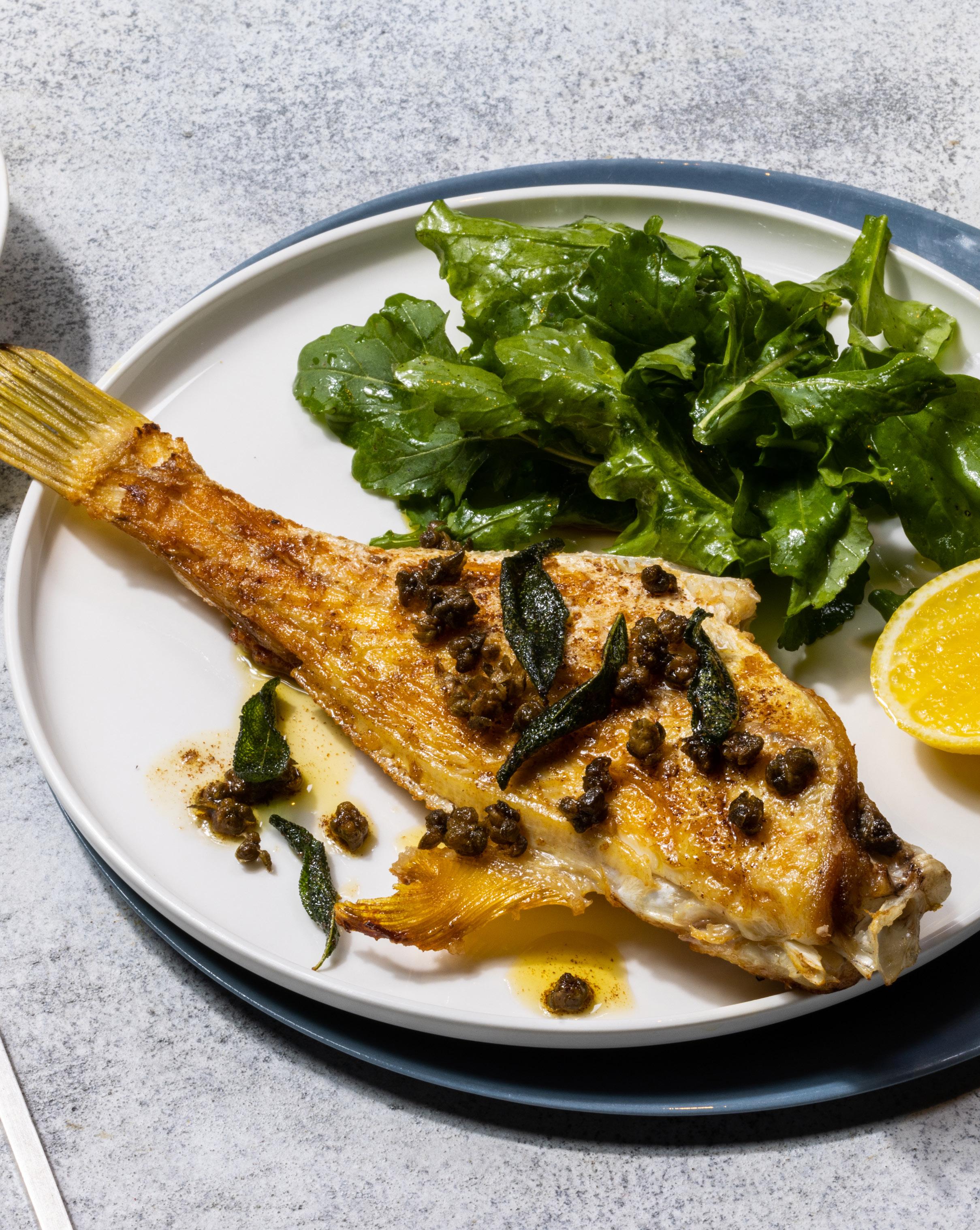
Leatherjackets are a difficult fish to fillet because of their bone structure, but they’re one of the easiest fish to eat off the bone as the large flakes of sweet, white meat lift away easily.
SERVES 6 • PREP 10 mins • COOK 10 mins
4 x 300-350g Leatherjackets, heads and skin off
Salt flakes and freshly ground black pepper, to taste
¼ cup extra virgin olive oil
120g butter
16 sage leaves
⅓ cup capers in brine, rinsed and dried
4 lemon cheeks
Wild or baby rocket, to serve
1. Heat a large frying pan over a high heat and add olive oil. When oil is hot, reduce heat to medium and add fish. Cook on one side for 4-5 minutes, until golden. Add butter and as soon as it starts to bubble and foam turn fish over. Cook for another 2-3 minutes, until flesh flakes easily when tested with a fork, basting a few times, then remove from the pan and keep warm.
2. Return the pan to a high heat and cook until the butter turns brown, add capers then sage leaves and cook for another minute or so, until capers and sage are crisp. Add a squeeze of lemon juice and remove from heat.
3. Mound rocket into the centre of plates, top with fish, spoon butter, capers and sage over the top and serve with a lemon cheek.
ALTERNATIVE SPECIES • Dories or Whitings.
Leatherjackets with Burnt Butter
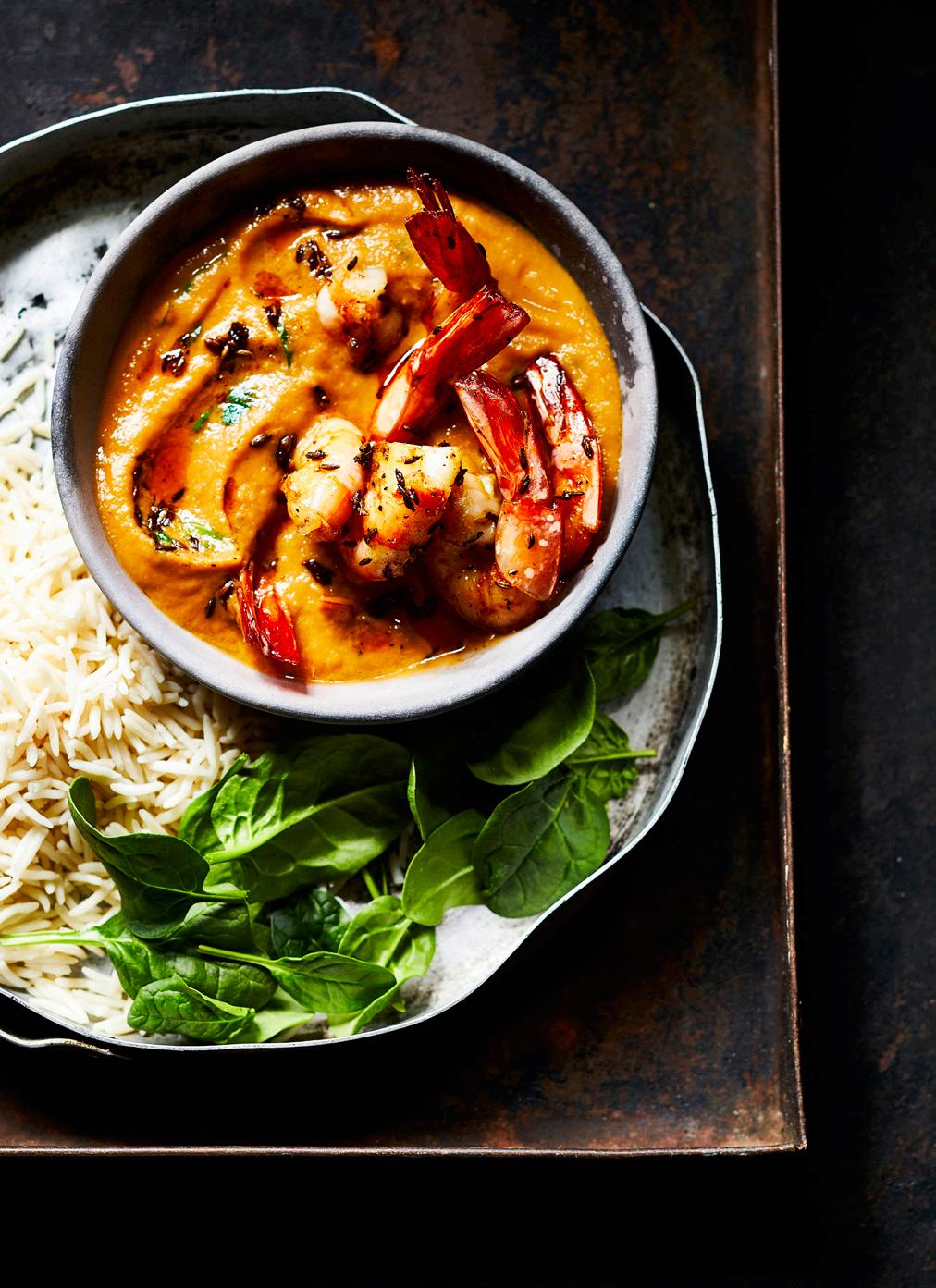
You know what time it is... A new season is about to begin, which means it’s time to announce our new schedule of classes.
Winter is truly one of the best times to book into a Sydney Seafood School class: it’s a cosy activity that goes ahead no matter the weather, and gives you a host of new skills to practice at home throughout the rest of winter.
Scroll on to read all about the new schedule, from old favourites, to new guest chefs, to stunning seasonal cuisines.

In a very special debut, we will be welcoming guest chef Aaron Ward for an unforgettable masterclass.
After starting his career in a seafood restaurant in Coffs Harbour, Aaron developed a strong love of cooking with vegetables from his years at three-hatted Sixpenny, where he ascended to the role of head chef. Aaron has worked closely with local farmers throughout his career, learning the importance of seasonality, sustainability and having a ‘no waste’ mindset in the kitchen.
Ward moved from Sixpenny to become head chef at the unparalleled Shell House, and most recently has found himself leading the team at the Bathers’ Pavilion Restaurant, to much critical acclaim. Expect fun and fresh produce-forward dishes, with plenty of fine-dining tips and tricks.
• Saturday 27th July •
Pasta Making with Elizabeth HewsonFew things go down better in winter than a warm bowl of pasta. We’ve scheduled a few classes to make sure you’re rolling dough like Nonna this season.
After a sell out class in 2022, the multi-talented Elizabeth Hewson - food writer and creative, founder of Saturday Night Pasta, author of the book of the same name, and food columnist for The Weekend Australian Magazine - is returning to SSS for a comprehensive artisan pasta workshop.
Roll up your sleeves; in this workshop you will be mixing, kneading, rolling and shaping two types of pasta, learning how to turn them into a variety of shapes, and creating some delicious sugos to go with them.
• Sunday 18th August •
ITALIAN SEAFOOD FEAST: WINTER EDITION
From Mediterranean mussels, to crab risotto, to baked squid, Italian cuisine and seafood are a match made in heaven. Our Italian Seafood Feast class gives you a window into the cornerstones of Italian cooking, focusing on technique, simplicity, and high quality ingredients.
The highlight of this class is learning how to make a perfect risotto using pantry staples, so that you always have an impressive recipe up your sleeve. But it doesn’t stop there – we’ll walk you through a complete dinner party menu, utilising fresh Spring Bay Mussels, Ceas Crabmeat, and Australian Squid.
• Sunday 16th June •
• Saturday 13th July •
• Sunday 11th August •
KEARLA AND BEYOND: INDIAN COOKING WITH BHAVNA SHIVALKAR
Forget everything you think you know about Indian food. We’ve called in Bhavna, the modern Desi, to give us an authentic lesson in all-things Indian home cooking.
From Keralan Curry to Zucchini Raita, this class will dive into traditional dishes that you might never have heard of before, but will soon know how to recreate at home.
Bhavna Kalra Shivalkar has a passion for sharing Indian cuisine with Australians, and spends her time crafting new fusion recipes, writing food columns for publications like SBS, launching pop-up restaurants and hosting cooking classes. Obviously, she’s the perfect person to run this special edition hands-on masterclass.
• Thursday 11th July •

It wouldn’t be a winter class series if we didn’t schedule some special classes perfectly suited to warming you up. Book into Bouillabaisse or Singapore Chilli Mud Crab to take home some delicious recipes to get you through the colder months.
• Friday 31st May •
• Sunday 14th July •
CHILLI MUD CRAB
• Saturday 22nd June •
• Saturday 20th July
•
• Saturday 17th August
Explore the full schedule on our website. We’ve kept all your favourites, including:
MEDITERRANEAN ODYSSEY


SEOUL FOOD: TASTE OF KOREA
SPANISH PAELLA
SEAFOOD SPECIALIST
SEAFOOD BBQ
BBQ MASTER
MIDDLE EASTERN FEAST
MEXICAN FIESTA
A TASTE OF SOUTH EAST ASIA
AND XO MUD CRAB
Just to name a few!
Baby, it's cold outside... With shorter days and cooler nights, there’s no better time to stay inside with a wine and cook up some comfort. But what to cook? Let us provide the inspo. With a wide range of classes, we have something for every seafoodie. So stay dry and warm with us as we turn up the heat this Winter!
Enter the code 'WARMUP' at checkout to get 20% OFF.
ItalianSeafood Feast Chilli Mud CrabCircle your pick!

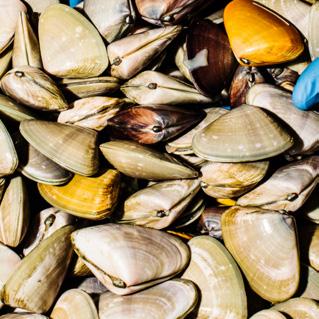







• CORALTROUT
• • MIRRORDORY


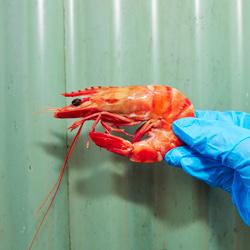
Australia is richer in sea life than most of us know. With over 5,000 species of fish in Australian waters, it’s incredible that we only eat a select few old favourites.
So, we’ve been working away behind the scenes to create 100 Species, your ultimate seafood hub. Backed by the experience and knowledge of Sydney Fish Market, this brand-new website is designed specially to help you get out of your comfort zone when it comes to seafood.
Whether you want to know more about your favourite fish, discover a substitute, learn about the different capture methods used by NSW fishers, or find the perfect recipe, 100 Species is where you’ll find all the info you need.

FROM THE AUCTION FLOOR TO SYDNEY SEAFOOD SCHOOL, SYDNEY FISH MARKET TEAM MEMBERS KNOW THEIR STUFF WHEN IT COMES TO SEAFOOD. WE PICKED THEIR BRAINS FOR YOU...

KAI TSE IT
What’s your favourite thing to eat at SFM?
The Battered/Grilled Fish and chips from the Boatshed are amazing. The Barra Burger is worth a mention as well!
What’s the most unique or exotic seafood you’ve ever tried?
Pufferfish. Surprisingly, it didn’t have the fishy smell. But it wasn’t as tasty as I imagined it to be.
What’s your top seafood shopping tip?
There are so many fantastic seafood retailers around Sydney that purchase from the Sydney Fish Market auction. My local favourite is Faros Seafood Outlet in Marrickville which has great prices and service.
PRAGYA TEJASWINI QHSE & RISKWhat’s your favourite thing to eat at SFM?
I must admit, I have a soft spot for the veggie juices served at Fruitezy, with the New York being a personal favorite. Not only are they delightful, but they’re also bursting with freshness and healthiness.
What’s the most unique or exotic seafood you’ve ever tried?
It has to be the spicy stuffed clams. Witnessing my daughter’s transition from scepticism to enthusiasm after trying them for the first time was truly remarkable. She went from questioning ‘how do you eat this thing?’ to eagerly asking for seconds.
What’s your top seafood shopping tip?
Cook what’s in season! Seasonal seafood is not only fresher and more flavorful, but it’s also usually more affordable.
AMELIA MAAIT SYDNEY SEAFOOD SCHOOLWhat’s your favourite thing to eat at SFM?
Has to be the beautiful Poke bowls made at Claudio’s Seafoods. Not only delicious and fantastic, also great value.
What’s the most unique or exotic seafood you’ve ever tried?
It may not be exotic to some but it is for me and certainly delicious, beautiful Vongole “Coffin Bay Vongole” from the pristine waters of the West Coast Eyre Peninsula South Australia. Washed & ready to cook. Try the Sydney Seafood School’s recipe “Spaghetti Vongole” served with salad and garlic bread….YUM!
What’s your top seafood shopping tip?
Always chat to the fishmonger. I always chat with Carmelo or Sophie at Get Fish before purchasing. They both are a wealth of knowledge in all seafood.

WANT TO HEAR MORE FROM OUR SEAFOOD EXPERTS?
CHECK US OUT ON TIKTOK!

WANT MORE?

Follow us on social media @sydneyfishmarket or visit our website sydneyfishmarket.com.au
Sydney Fish Market is located on the traditional lands and waters of the Gadigal and Wangal people, who have lived and fished here for tens of thousands of years. We acknowledge the traditional custodians of this site and pay respect to Elders past and present.